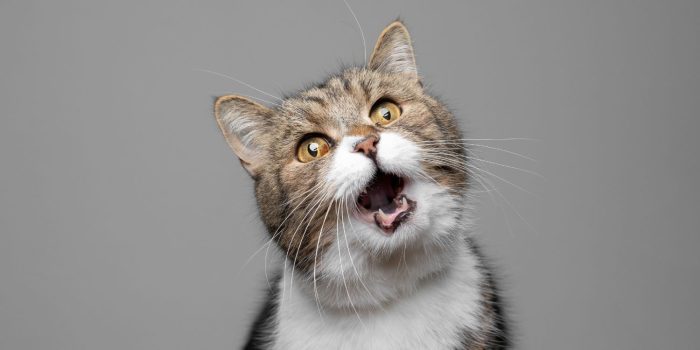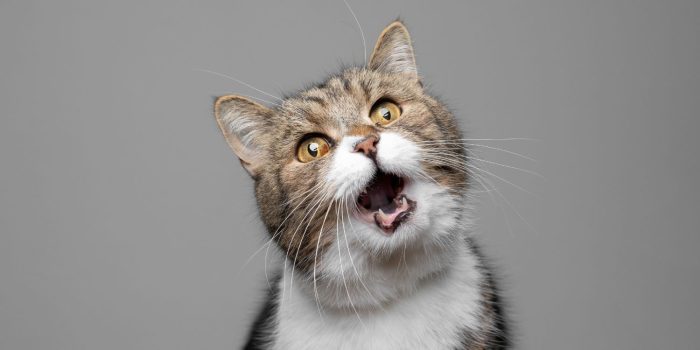
Good Thing Cats Have 9 Lives: The Truth Behind the Myth
Good thing cats have 9 lives, right? It’s a saying we’ve all heard, but have you ever stopped to think about where it came from? The phrase “cats have nine lives” has been around for centuries, and it’s a testament to the incredible resilience and agility of these fascinating creatures.
This saying, while seemingly a whimsical expression, holds a surprising amount of depth and history.
From the origins of the saying and its cultural significance to the scientific reasons behind their remarkable survival skills, we’ll explore the truth behind the myth of feline immortality. We’ll delve into the physical and biological adaptations that allow cats to bounce back from seemingly impossible situations, and uncover the fascinating role they’ve played in human history and folklore.
The Science Behind Cat Survival
Cats’ reputation for having nine lives isn’t just a myth. It stems from their remarkable ability to survive falls, encounters with predators, and other perilous situations. This incredible resilience is a testament to their unique physical and biological adaptations.
The Role of Reflexes, Balance, and Agility
Cats’ remarkable reflexes, balance, and agility are crucial to their survival. These traits are deeply ingrained in their biology, honed over millennia to ensure their ability to navigate challenging environments.
- Reflexes:Cats possess lightning-fast reflexes, allowing them to react swiftly to sudden threats. This is particularly evident in their ability to catch prey, dodge obstacles, and even right themselves after a fall. Their reflexes are facilitated by their highly developed nervous system, which processes information at an astonishing rate.
- Balance:A cat’s inner ear houses a complex system of fluid-filled chambers and sensory cells that provide information about their orientation in space. This intricate system, known as the vestibular system, allows cats to maintain their balance even on narrow ledges or uneven surfaces.
Their flexible spine and strong muscles further enhance their balance, enabling them to twist and contort their bodies in ways that seem impossible to other animals.
- Agility:Cats’ lithe and muscular bodies are perfectly designed for agility. Their flexible spines, strong legs, and sharp claws allow them to leap, climb, and navigate tight spaces with ease. This agility is crucial for hunting, escaping predators, and maneuvering through challenging environments.
Keen Senses
Cats’ keen senses are another crucial element of their survival strategy. These senses allow them to perceive the world in ways that humans cannot, granting them a significant advantage in both hunting and self-defense.
- Vision:Cats have excellent night vision, thanks to a higher concentration of light-sensitive cells in their retinas. This allows them to see clearly in low-light conditions, making them formidable hunters even at night. They also have a wider field of vision than humans, allowing them to perceive a greater area of their surroundings.
- Hearing:Cats’ hearing is exceptionally sensitive, allowing them to detect sounds that are inaudible to humans. This keen hearing is essential for hunting, as it allows them to locate prey by the faintest of sounds.
- Smell:Cats have a highly developed sense of smell, which they use for a variety of purposes, including identifying prey, communicating with other cats, and detecting danger. Their olfactory receptors are much more sensitive than those of humans, allowing them to smell things at a much greater distance.
The Righting Reflex
One of the most remarkable adaptations that contributes to cats’ survival is their righting reflex. This instinctual ability allows them to twist their bodies in mid-air and land on their feet, even after falling from great heights. This reflex is a complex interplay of sensory input and muscular coordination, which allows cats to orient themselves and regain control of their bodies during a fall.
- Sensory Input:As a cat falls, its inner ear senses the change in orientation. This information is transmitted to the brain, which then sends signals to the muscles to initiate the righting reflex.
- Muscular Coordination:The cat’s muscles contract in a specific sequence, rotating its body and bringing its feet underneath it. This coordinated movement allows the cat to land on its feet, minimizing the impact of the fall.
The Cultural Significance of Cats

Cats have held a special place in human cultures for millennia, weaving their way into mythology, religion, folklore, and art. Their enigmatic nature, grace, and independence have inspired both reverence and fear, making them enduring symbols in various societies.
Cats in Ancient Egypt, Good thing cats have 9 lives
Ancient Egyptians held cats in high regard, viewing them as sacred creatures associated with the goddess Bastet. Bastet, often depicted as a woman with a cat’s head, was the goddess of protection, motherhood, and fertility. Cats were believed to embody her divine power and were revered for their ability to control pests, particularly snakes.
I’m convinced cats really do have nine lives, because how else could they survive the constant chaos they create? From knocking over plants to chasing laser pointers, their curiosity often gets them into trouble. But even when they’re causing mischief, their charm is undeniable, just like the delightful pairing of strawberries meet basil , which adds a surprising sweetness to savory dishes.
Perhaps a little bit of chaos is good for the soul, just like a dash of basil can elevate the flavor of a simple strawberry dessert.
The Egyptians even mummified cats and buried them in elaborate tombs, demonstrating the profound respect they held for these animals. The Egyptians believed that cats could protect against evil spirits and bring good fortune. Their association with Bastet made them central to religious rituals and ceremonies.
I always say it’s a good thing cats have nine lives because Christmas with kids is a whirlwind! Between the excitement, the sugar rush, and the endless stream of presents, it can feel like a chaotic adventure. But it’s also a magical time, filled with laughter and memories.
To keep the magic alive without breaking the bank, I recommend checking out 12 fun frugal family Christmas traditions. These tips are sure to make your holidays merry and bright without needing a cat’s nine lives to survive them!
Cats in Mythology and Folklore
Across cultures, cats have been featured in myths and folklore, often embodying both positive and negative traits. In some cultures, cats are associated with witchcraft and the supernatural, while in others, they represent good luck and prosperity. For instance, in Japanese folklore, the Maneki-Neko, a beckoning cat with a raised paw, is believed to bring wealth and good fortune.
I’m so glad cats have nine lives because, let’s face it, the holidays are a minefield of potential chaos. From awkward family gatherings to the inevitable “who brought the most elaborate dish” competition, there’s always a chance things could go south.
It’s almost enough to make you wish you could just curl up and disappear like a cat under the couch! Maybe that’s why they say, “bring on the holiday drama,” because with nine lives, you can always bounce back.
But honestly, sometimes I just wish I had a cat’s ability to sleep through the whole thing.
In contrast, in European folklore, black cats are often associated with bad luck and witchcraft.
Cats in Art and Literature
Cats have been immortalized in art and literature throughout history. From ancient Egyptian hieroglyphics depicting cats to Renaissance paintings showcasing their elegance, cats have been a recurring theme in artistic expression. In literature, cats have served as both protagonists and supporting characters, reflecting their complex nature and their ability to evoke a range of emotions.
The “Cat in the Hat” by Dr. Seuss is a classic example of a cat as a beloved character in children’s literature. In more serious literature, cats often symbolize independence, mystery, and the unknown, as seen in the works of authors like Ernest Hemingway and T.S.
Eliot.
The Impact of the Saying on Human Perception of Cats: Good Thing Cats Have 9 Lives
The phrase “cats have nine lives” has become deeply ingrained in human culture, influencing how we perceive and interact with these feline companions. This saying, passed down through generations, has shaped our understanding of cats’ agility, resilience, and even their mystical nature.
The Saying’s Contribution to the Belief in Cats’ Magical or Supernatural Qualities
The notion that cats possess multiple lives has contributed to the belief that they possess a certain magical or supernatural quality. This belief has roots in ancient cultures, where cats were often associated with deities and the supernatural. The saying reinforces this perception, suggesting that cats are somehow protected from harm and possess an uncanny ability to survive even the most perilous situations.
Examples of How the Phrase Has Been Used to Create Humor or to Express Admiration for Cats
The phrase “cats have nine lives” has also become a popular source of humor and a way to express admiration for cats’ agility and resilience. It’s often used to explain how cats seem to escape harm unscathed, even after seemingly dangerous falls or encounters.
For example, a cat owner might say, “My cat fell from the third story window, but luckily he has nine lives!” This humorous use of the saying underscores the common perception of cats as remarkably lucky and almost invincible.
The Myth of Nine Lives
While the saying “cats have nine lives” is charming and enduring, it’s important to recognize its limitations. The phrase romanticizes cats’ agility and resilience, but it ultimately downplays the very real dangers they face in their environment. Cats are vulnerable to injury and death just like any other creature, and their survival is not guaranteed.
The Reality of Cat Vulnerability
The saying “cats have nine lives” suggests that cats are invincible and can survive any fall or accident. However, this is far from the truth. Cats are susceptible to a variety of injuries and illnesses, and they can be killed just as easily as any other animal.
Cats, despite their agility and reflexes, can suffer from a variety of injuries, including:
- Fractures: Falls from heights can lead to broken bones, especially in the legs and spine.
- Internal Injuries: Impacts from collisions with cars or other objects can cause internal bleeding and organ damage.
- Traumatic Brain Injury: Falls from heights or collisions can cause brain damage, which can be fatal or lead to long-term disabilities.
Common Dangers for Cats
Cats face a variety of dangers in their environment, both indoors and outdoors. Some of the most common include:
- Traffic Accidents: Cars are a major threat to cats, especially in urban areas. Cats are often struck by cars while crossing the street or chasing after prey. Even if they survive the initial impact, they can suffer from severe injuries that require extensive medical care.
- Predators: Cats are prey animals, and they are vulnerable to attacks from other animals, such as dogs, coyotes, and owls. Outdoor cats are at a higher risk of predation, especially if they are not supervised.
- Poisoning: Cats can be poisoned by a variety of substances, including household cleaners, pesticides, and certain medications. Ingestion of even small amounts of these substances can be fatal.
- Disease: Cats are susceptible to a variety of diseases, including feline leukemia virus (FeLV), feline immunodeficiency virus (FIV), and rabies. These diseases can be fatal, and they can be spread through contact with other infected animals.
Real-Life Examples
Numerous cases highlight the reality of cat vulnerability and the dangers they face. One tragic example is the case of a cat named “Mittens” who fell from a 10-story building and sustained severe injuries, including a broken leg and internal bleeding.
Despite emergency surgery, Mittens sadly succumbed to her injuries. Another example involves a cat named “Whiskers” who was hit by a car while crossing the street. Whiskers suffered from a fractured pelvis and a punctured lung, and he required months of rehabilitation.
These cases demonstrate the fragility of cats and the potential consequences of their exposure to danger.


